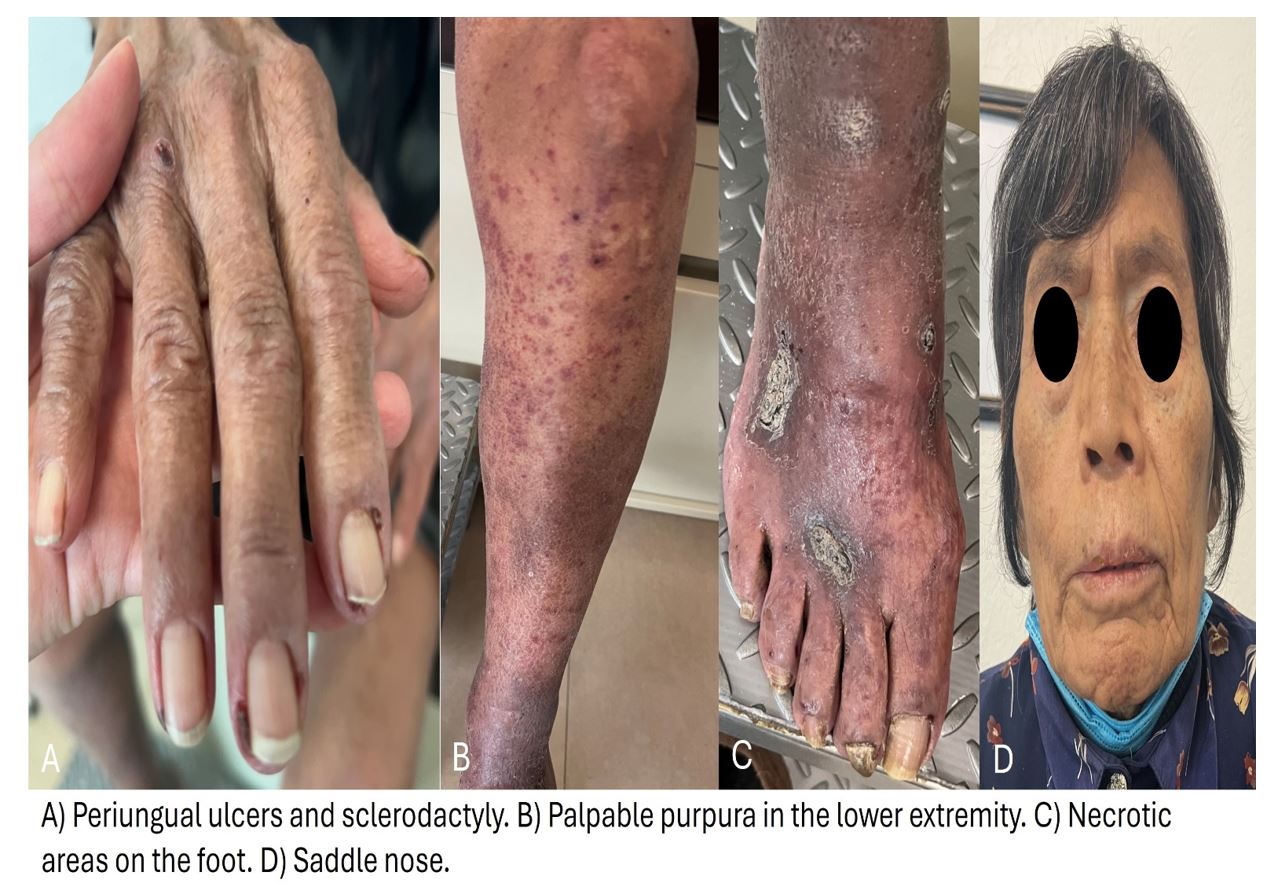Polyangiitis Overlap Syndrome with Granulomatosis and Systemic Sclerosis: Diagnostic Challenge
Cervantes González Alejandra Montserrat1*, Alcocer León María2, De Hoyos Rodríguez and Gilberto1
1Department of Rheumatology, Hospital Regional 1° de Octubre, Mexico City
2Department of Rheumatology, Instituto del Corazón, Querétaro
*Corresponding author
*Cervantes González Alejandra Montserrat, Department of Rheumatology, Hospital Regional 1° de Octubre, Mexico City
Figure 1
- Khalayli N, Ibrahim R, Ibrahim R, Kudsi M (2023) Antineutrophil cytoplasmic antibody-associated vasculitis with systemic sclerosis: a fatal case report. Ann Med Surg (Lond). 85(11):5770-5775.
- Rodríguez-Reyna TS, Alarcón-Segovia D (2005) Overlap syndromes in the context of shared autoimmunity. Autoimmunity 38(3): 219-223.
- Ha JW, Pyo JY, Ahn SS, Song JJ, Park YB, Lee SW (2024) Overlap syndrome of systemic sclerosis with antineutrophil cytoplasmic antibody-associated vasculitis according to 2022 ACR/EULAR criteria. Korean J Intern Med 39(3):524-536.
- Guibert F, Garnier AS, Wacrenier S, Piccoli G, Djema A, et al. (2019) Patients with ANCA-Associated Glomerulonephritis and Connective Tissue Diseases: A Comparative Study from the Maine-Anjou AAV Registry. J Clin Med 8(8):1218.
- Khanna D, Aggarwal A, Bhakuni DS, Dayal R, Misra R. (2003) Bactericidal/permeability-increasing protein and cathepsin G are the major antigenic targets of antineutrophil cytoplasmic autoantibodies in systemic sclerosis. J Rheumatol 30(6): 1248-1252.
- Martín-Nares E, Zuñiga-Tamayo D, Hinojosa-Azaola A (2019) Prevalence of overlap of antineutrophil cytoplasmic antibody associated vasculitis with systemic autoimmune diseases: an unrecognized example of poliautoimmunity. Clin Rheumatol 38(1):97-106.
- Masiak A, Jassem E, Dębska-Ślizień A, Bułło-Piontecka B, Kowalska B, Chmielewski M (2024) Co-existence of ANCA-associated vasculitides with immune-mediated diseases: a single-center observational study. Rheumatol Int 44(8):1521-1528.

